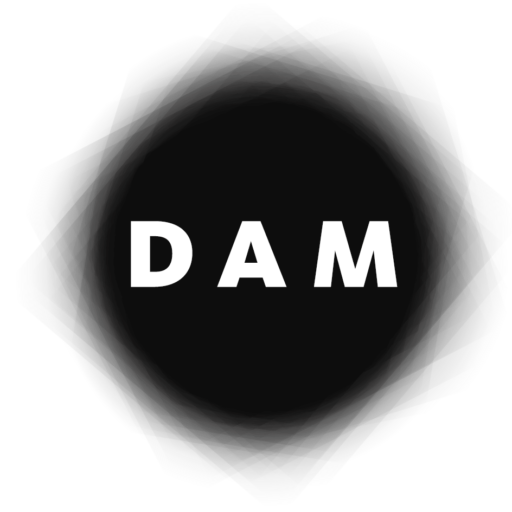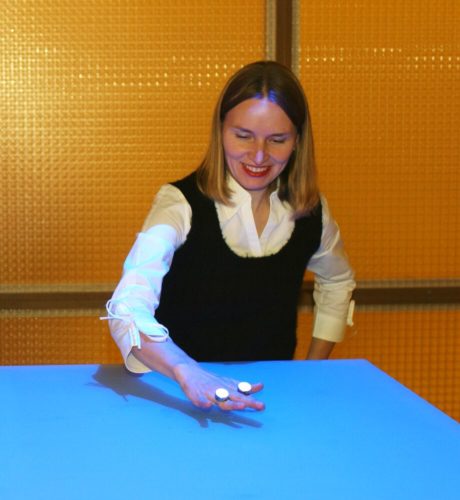NanoScape (2002)
This nano-scale sculpture is invisible, just like the Nano-world it comments about. While science and media try to capture images of these tiniest of particles in order to understand their properties, Nano-Scape tries to make this Nano-world intuitively accessible through touch.
A wireless magnetic force-feedback interface allows users to touch invisible nano particles, creating an every changing invisible sculpture which modifies its shape and properties as users interact with it and with eachother.
Users wear magnetic ring interfaces that are made of strong permanent magnets. When users move their hands over the tables of the installation, strong magnetic forces, repulsion, attraction and even slight shock can be felt. As users try to comprehend the structure of this invisible sculpture through touch, its shape changes and varies, as a direct result of the users´ hand positions and frequency of movements. The invisible sculpture also takes into account other users´ interaction forces. These forces are calculated through a simplified atomic force simulation, modeled on VanderWaalsforces. This allows us to model simultaneous interaction influences of various users onto an overall collective shape.
We developed a special electromagnetic interface that links the users´ hands positions to the strength of magnetic feedback forces. We measure the location of permanent magnets, placed on the rings held by the users, through camera detection. The magnets´ positions are then driving and modulating magnetic forces produced by several strong electromagnets each placed under the installation´s tables. The range of magnetic fields produced in this process reaches up to 6000 Gauss. Our novel interface technology creates a new and yet unseen type of interaction experience where users feel strong, yet invisible attractions and repulsions as results of their own interactions.
When users experience Nano-Scape, a mental image of an invisible sculpture and its shape emerges.The invisibility of the sculpture is enhanced by the users´ own imaginations and expectations, the user´s mental image of the invisible culpture becomes in fact a main component of the work of art: the work goes beyond the real, the fictional, the imaginary and the virtual and reaches into a purely mental realm.
Developed for the exhibition “Science+Fiction“at the Sprengel Museum Hannover and the ZKM, Karlsruhe
Supported by IAMAS Institute of Advanced Media Art and Sciences, Gifu Japan
More works
Interactive Plant Growing (1992)
A-Volve (1994-1995)
Life Spacies I & II (1997-1999)
Haze Express (1999)
The Living Web (2002)
NanoScape (2002)
MobileFeelings I & II (2003-2004)
Eau de Jardin (2004)
Life Writer (2006)
The Value of Art (2010)
Escape (2012)
Portrait on the fly (2015-2018)
Egometer (2017)
Neuro Mirror (2017)
Scavengers (2020)




